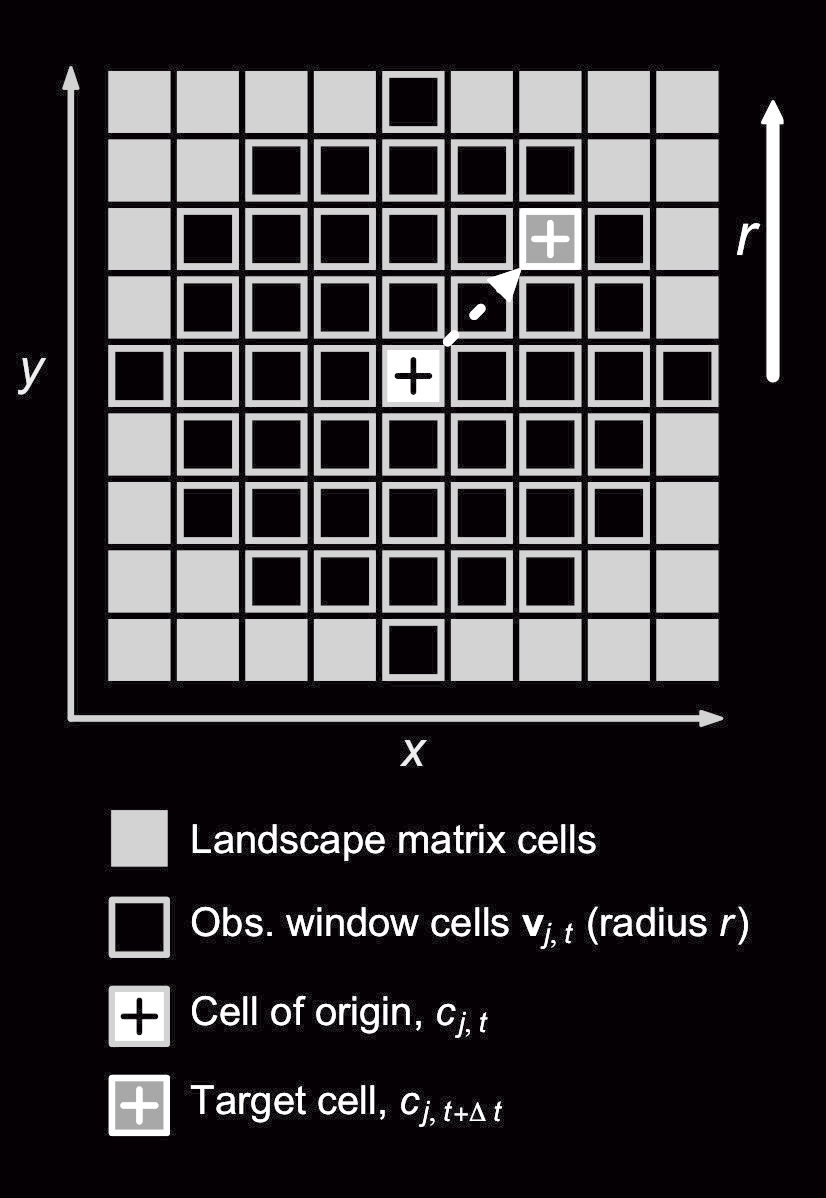

|
| Home | People | Projects | Publications | Contact |
Animal movementFor the last few years, we have worked in collaboration with researchers from different institutions to develop statistical models for animal movement. With these models we search to understand how animals move over the landscape, what triggers their preferences and how different landscape and environmental features affect their movement decisions. |
 |
 |
Our models combine a state-space approach to handle missing movement records, together with what we have described as Markov Chain Resource Selection (MCRS) functions to determine what features increase the probability of moving to a specific point. Together with our colleagues from Jaguar Conservancy and researchers from the Institute of Ecology of the UNAM We have applied these models to find wildlife passes for jaguars (Panthera onca) in the Mayan forests of Mexico (Colchero et al. 2011), and to understand foraging behavior in howler monkeys (Alouata paliata) in the same region (Plante, Colchero & Calmé 2014). In collaboration with Jaguar Conservancy and governmental organizations in Mexico, we are currently extending our previous jaguar movement analysis to the entire region in order to establish corridors and wildlife passes to mitigate the impact of the Tren Maya project. |

|